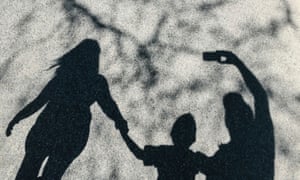Healthcare that is preventive rather than reactive is key if this epidemic is to be tackled effectively
Loneliness
is thought to be a universal, inevitable, even psychological
affliction. Not only the United Kingdom but also vast swaths of
post-industrial populations across Europe, the United States and Japan
report heightened levels of loneliness, with attendant implications for
public health.
The findings of a recent BBC loneliness survey – that a third of respondents (55,000 in the UK) often felt lonely, that there was shame attached, that it could affect people of all life stages, that it was connected to social media use and linked with ill health – flesh out the detail behind discussion of a “loneliness epidemic”. But neither the physicality of loneliness, nor its origins, received much emphasis in the study. And as its history makes clear, loneliness is more complex than much of the current analysis suggests.
"Before 1800, the English word ‘loneliness' did not exist"
Most research acknowledges the role of modernity in the “epidemic”
(the rise of single households, less face-to-face interaction, the
influence of social media) but presumes people have always been lonely.
But that’s not the case. Loneliness as a problem is a product of modern ways of thinking about the self and society.The findings of a recent BBC loneliness survey – that a third of respondents (55,000 in the UK) often felt lonely, that there was shame attached, that it could affect people of all life stages, that it was connected to social media use and linked with ill health – flesh out the detail behind discussion of a “loneliness epidemic”. But neither the physicality of loneliness, nor its origins, received much emphasis in the study. And as its history makes clear, loneliness is more complex than much of the current analysis suggests.
"Before 1800, the English word ‘loneliness' did not exist"
Before 1800, the English word “loneliness” did not exist. People lived in small communities, they tended to believe in God (which meant they were never really alone, even when they were physically isolated), and there was a philosophical concept of the community as a source of common good. There was no need for a language of loneliness.
And loneliness is physical. For more than 2,000 years before the development of scientific medicine, physicians had a more holistic approach to mental and physical health. What was eaten and drunk, how one moved, how little (and where) one slept, what the air was like, all influenced a person’s emotions. The 18th-century Scottish physician William Cullen recommended horse-riding to invigorate the fibres of the body and its “spirits”. He advised one Mrs Rae in 1777 to invest in seeing friends, avoiding excessive solitude, and giving the mind “as much attention as [the] body” for optimum health.
In the neurocentric 21st century, however, there is little discussion of the lonely body.
We are not taught to watch the body language of others to see if we can detect loneliness (which, because it is a “cluster” of emotions – anger, sadness, grief, fear – has no outwardly uniform expression). Nor are we encouraged to work with and through the body to prevent or alleviate loneliness. Social care has been stripped, so that many are denied help with medication, let alone “body work”. Yet we know massage therapies reduce loneliness, especially among those for whom touch is not a part of their everyday relationships. Health workers in palliative care have found that massage produces a form of “existential respite”.
Engaging the body and its senses appears to bring people back to social connectedness. The Spitz Charitable Trust has an evolving music programme that reduces loneliness among older people. And those with dementia can be reinvigorated by hearing the music of their youth. Music positively affects loneliness in all ages, as seen in the composer Nigel Osborne’s use of music and the creative arts to support traumatised children. Dancing brings together movement and music, and ballroom dancing has been found to alleviate loneliness among the elderly in Brazil. Researchers found that it augments “mental, emotional and physical wellbeing”, as well as countering social isolation.
How do we achieve this? Attempting to recreate the pre-1800 experience of the small community is not necessarily the answer. I suspect this was rather suffocating for many people. But we could start investing more in health and social care that acknowledges the connection between physical and mental health, and in programmes that generate and sustain local communities, such as Age UK Doncaster’s Circles.
We need healthcare that is preventive rather than reactive, that sees the body less as a series of parts to be treated than a complex whole in which emotions are accessed through touch, sound, smell, taste and sight. This is the only context in which “social prescribing” of, for example, dance classes on the NHS, as recently announced by the government, will make a meaningful difference.
No man, as John Donne wrote in 1624, is an island. Nor woman, either. The individual is part of, and not separate from, society – in mind but also in body.
• Dr Fay Bound Alberti is a writer and historian and co-founder of the Centre for the History of Emotion at Queen Mary University of London. Her book, A Biography of Loneliness, will be published in 2019
• In the UK, Samaritans can be contacted on 116 123. In the US, the National Suicide Prevention Hotline is 1-800-273-8255. In Australia, the crisis support service Lifeline is on 13 11 14. Hotlines in other countries can be found here

No comments:
Post a Comment